8+ Sample Software License Proposal
-
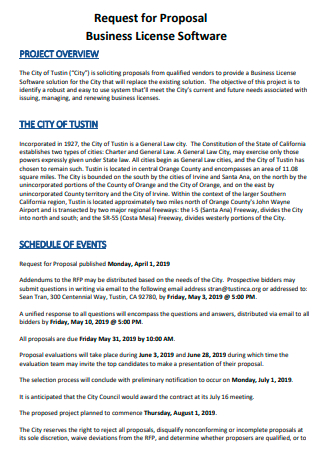
Software Business License Proposal
download now -
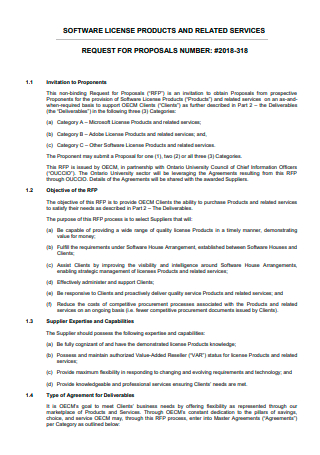
Software License Products and Services Proposal
download now -
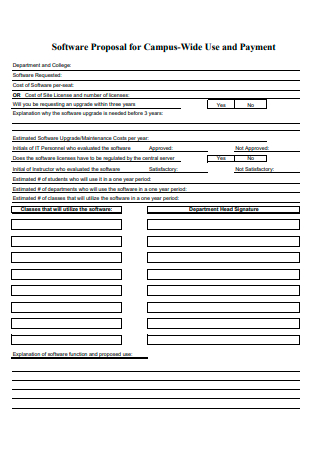
Basic Software License Proposal
download now -
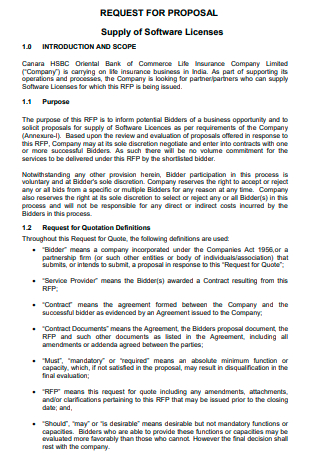
Supply of Software License Proposal
download now -
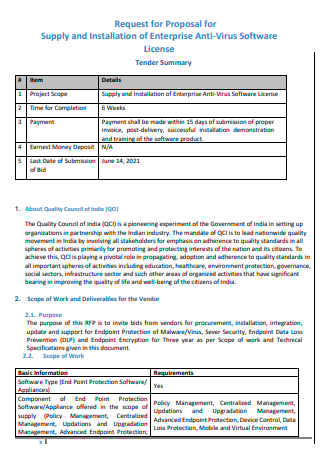
Anti-Virus Software License Proposal
download now -

Operating System Software Server License Proposal
download now -
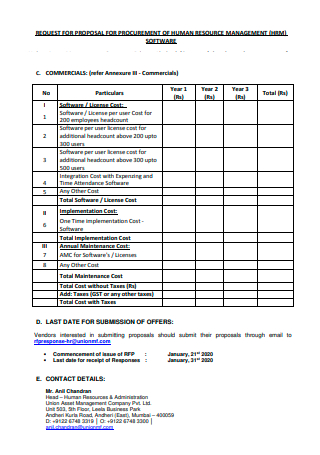
Human Resource Management Software License Proposal
download now -

Renewal Software License Proposal
download now -
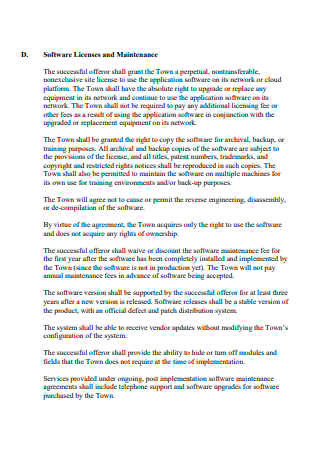
Software License Proposal in PDF
download now
FREE Software License Proposal s to Download
8+ Sample Software License Proposal
What is a Software License Proposal?
Different Kinds of Software License Proposals
Types of Software License Models
How to Write a Software License Proposal
FAQs
What is a software license?
What is a software license model?
What are the fundamental elements of a software license proposal?
What are some examples of software license proposals?
How to write a proposal for software system development?
What is a Software License Proposal?
A software license proposal is an engaging document that comprises specific and measurable goals, objectives, methods, or strategies, a timeline, and an IT and software budget for the software license agreement that will be established. As a communication tool for businesses and software licensing support firms, it provides the major requirements and the proposed software development solution in solving various issues concerning software licensing. Developing a thought-provoking proposal for your software license agreement and IT software development project enables you to request for software license and/or call for support from prospective business partners to supply you with software licenses.
Based on a statistical report, 85% of businesses and organizations are out of compliance with their software license agreements, even though it must not be hard for companies and organizations to identify which IT and software products and services they are authorized to use. Also, up to 25% of the software budget of a company will be spent on software license agreements alone. Thus, writing an appealing and direct-to-the-point software license proposal is a worthwhile method for software project managers and other IT software project management and licensing specialists to work efficiently on managing their software license agreements and other software development agreements.
Different Kinds of Software License Proposals
For small enterprises and organizations with less than 500 desktop computers and fewer servers, one person is commonly responsible for managing software licenses. On the other hand, bigger companies and organizations with thousands of PCs and many servers have some people who are dedicated to software license management. Many individuals are involved in IT and software service management: from software or hardware inventory to technical support and contract management. They also create different kinds of proposals like enterprise software proposal depending on the software licenses they will use.
1. Software Business License Proposal
A software business license proposal is a request for a proposal made by a city, community, or organization when they need to solicit new software proposals from qualified vendors in providing them with business license software solutions that will be used as a new solution for their existing system issues. It comprises the project overview, background of the city or organization, event schedule, and other components. Define the goals and objectives of the project. For example, the software business license project has the aim to identify an accessible and dynamic system that will meet the current and future needs of the city or organization related to issuing, managing, and renewing business licenses.
2. Software License Products and Services Proposal
Create a basic request for proposals for software license products and services. Make some sections featuring the core details of your proposal such as an invitation to proponents, objectives of the RFP, supplier expertise and abilities, and type of agreement for deliverables. When defining your objectives, explain the purpose of the RFP process for the selection of your suppliers. Some typical requirements that you may add in this section are the suppliers should be capable of providing an extensive range of exceptional software license products in a timely manner and be responsive to clients while proactively delivering top-quality software products and related services.
3. Anti-Virus Software License Proposal
An anti-virus software license proposal is an RFP document that outlines the major items and details on the supply and installation of an enterprise anti-virus software license. Write the content of the major items such as project scope statement, time for completion, payment, earnest money deposit, and last date of submission of a bid. Also, create a short background of your enterprise or organization, and scope of work and deliverables for the vendor, as well as the requirements.
4. Operating System Software Server License Proposal
Construct a development request for proposal for the operating system software server license of your business establishment or corporate firm. Write a simple background of your business, highlighting the mission and vision of your company. Then, identify the goals, objectives, instructions to the vendor, and qualification criteria. For instance, write in your RFP objective that you need to call responses from vendors for the supply of specific system software and server.
5. Human Resource Management Software License Proposal
A software license proposal for human resource management is an RFP document that contains specific objectives, commercials, the last date for submission of offers, and contact details of the head of human resources and administration. Describe the particulars that the human resource management needs such as the software/license cost, implementation cost, annual maintenance cost, and total maintenance cost. Indicate the start date of RFP and last date for receipt of responses.
Types of Software License Models
Various businesses and organizations offer wide-ranging types of software license models according to their customer needs or preferences. They have an advantage that will help them to increase customer brand loyalty and gather more interested customers to avail of their software license products and services.
How to Write a Software License Proposal
Writing a well-designed software license proposal is an effective way for project managers and their team members to begin working on and implementing a software license project. There are common steps you can do to write a compelling software license proposal while using one of our software license proposals and other software management document templates.
Step 1: Create a Brief Introduction and Needs Assessment
Start your software license proposal with a brief and creative introduction. Tell your prospective clients or suppliers about your business or organization. Create a needs assessment checklist to identify the needs of your management by explaining the purpose, goals, mission, and vision of your business or organization. For example, indicate in your proposal that your business needs a unique project management software solution to make your workflow more efficient and allow your team to grow your client base.
Step 2: Cite the Goals, Objectives, and Desired Results
Specify the primary goals, objectives, and desired results in the implementation of your software license project. Communicate the key ideas, concerns, and opinions of the management regarding the software license solutions and desired outcomes on the software licensing and development project. Use simple language while defining the goals, objectives, and desired results.
Step 3: Describe the Requirements and Qualification Criteria
Create a section that contains the requirements and qualification criteria or the eligibility of the suppliers in providing the software license you need for your business or management. List down the key requirements for the software selection process based on your comprehensive business data analysis reports. Preparing qualification criteria will help you to decide whether a system is suitable for your business or whether a supplier’s software license product works with your existing legacy systems.
Step 4: Set the Submission Date
Establish the start and end date of the software license proposal submission. Clearly indicate the start and end dates of the RFP process so that potential suppliers or vendors know the perfect time to submit their respective software license proposals to your management.
Step 5: Finalize the Software License Proposal
Lastly, finalize your proposal for the software license project that contains valuable information about your pitch. Set a schedule for a meeting with the suppliers or vendors of software licenses you will need for your business. After that, ask for some help from your team for efficient proofreading and revision of your document so that you can submit your software license proposal in an organized manner.
FAQs
A software license is one of the formal and important business documents as it outlines legally binding guidelines for the distribution and usage of the software. It gives end users the right to one or more copies of the software without copyright violation. It also specifies the responsibilities of the parties having the license agreement and enforces restrictions on how the software can be used.
A software license model is a product model that contains diverse parameters combined that indicate how software can be used by a customer. It maps various software license attributes or well-defined properties such as name, data type, and potential range into logical groups. Some common software license models are concurrent license, perpetual license, proprietary license, subscription-based license, cloud-based license, and network license.
When you develop your software license project proposal, you need to consider these fundamental elements such as contact information of your company or organization, company profile details, a brief overview of the software license agreement, objectives of the software license proposal, a simple description of software licensing models and strategies, the financial budget, purpose, and benefits.
Some examples of software license proposals are software business license proposals, software license products, and services proposals, human resource management software license proposals, renewal software license proposals, software license and annual maintenance contract proposals, and anti-virus software license proposals.
First, write a captivating cover letter. For the project proposal of your software system, make the title page and construct the table of contents. Create a brief and cohesive executive summary and basic outline of the software systems. Explain the detailed outcomes of the software systems development study. Define three or four possible solutions or software systems alternatives. Add the recommendations of the software systems analysts.
What is a software license?
What is a software license model?
What are the fundamental elements of a software license proposal?
What are some examples of software license proposals?
How to write a proposal for software system development?
Software licensing is integral for all businesses and organizations as keeps the light on or expands brands and companies in any worthwhile way. The use of leading-edge software licensing solutions makes them more efficient in their software license management and prevents over-licensing of underused or unused software. With centralized and efficient software license management, you are able to leverage complementarity between your software products. Be skilled in crafting a compelling and unique software license proposal. We have sample software license proposal samples on our website including operating software system license proposals, new software business license proposals, software network project proposals, and many others.
